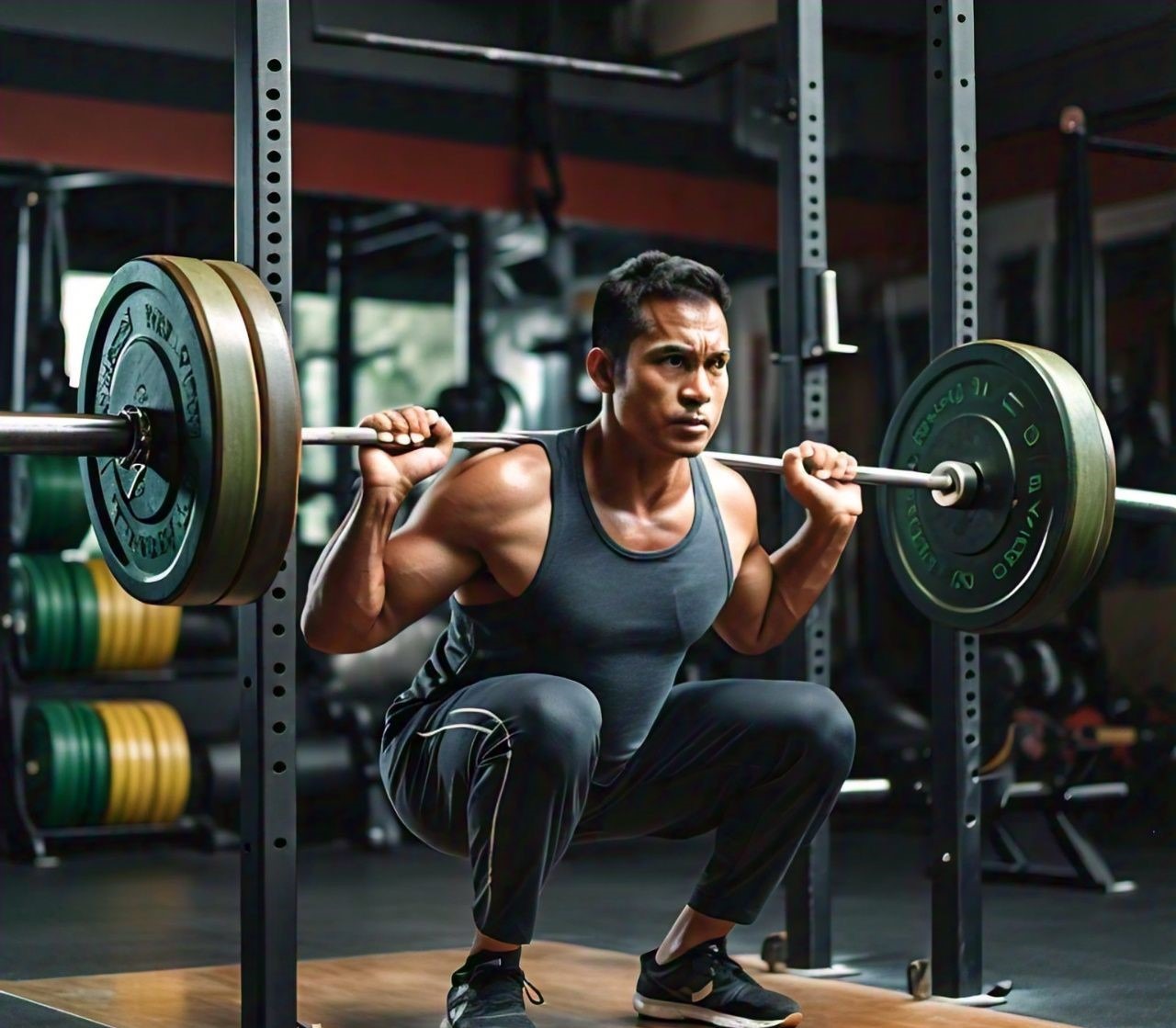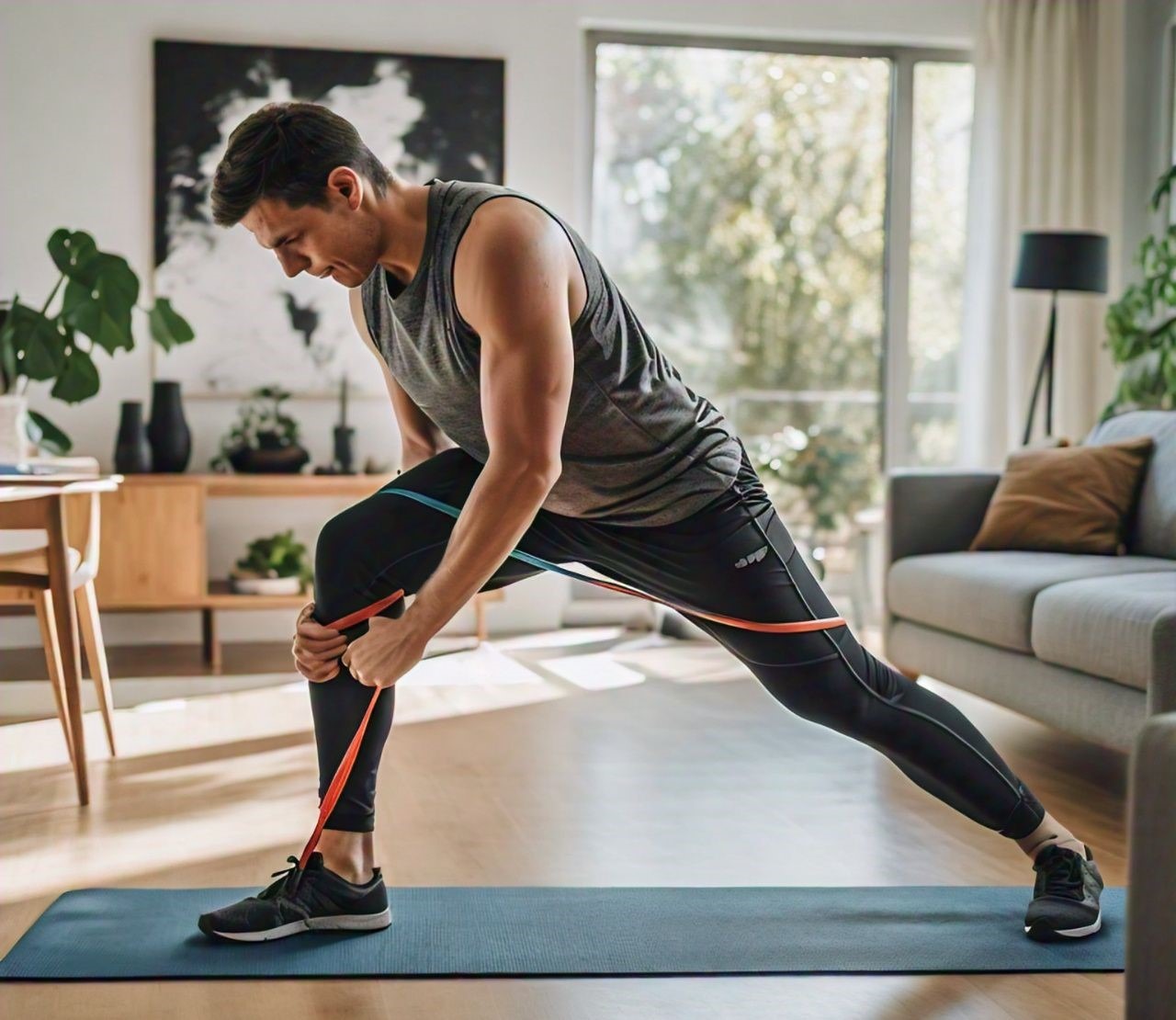Dumbbell Back Exercises For Beginner and Advanced
Introduction
Strengthening your back muscles is crucial for maintaining good posture, preventing injuries, and enhancing overall fitness. Incorporating dumbbell exercises into your routine offers versatility and effectiveness that can benefit both beginners and advanced fitness enthusiasts. This article will introduce and detail five new dumbbell back exercises suitable for all fitness levels, providing comprehensive information to help you get the most out of your workout.
Understanding Back Muscles
Your back consists of several major muscles that play a vital role in your overall strength and stability. The primary muscles targeted by dumbbell exercises include:
- Latissimus Dorsi: These large muscles run down the sides of your back, helping with shoulder movement and stability.
- Trapezius: Located in the upper back, these muscles support neck and shoulder movements.
- Rhomboids: Found between your shoulder blades, they help retract the scapula.
- Erector Spinae: These muscles run along the spine, providing support and facilitating movements like bending and straightening.
- Teres Major and Minor: Small muscles that assist in shoulder rotation and stability.
Strengthening these muscles offers numerous benefits, such as improved posture, enhanced core stability, and a reduced risk of back pain and injuries.
Benefits of Using Dumbbells for Back Exercises
Dumbbells are a versatile tool for back exercises, offering several advantages:
- Versatility and Range of Motion: Dumbbells allow for a greater range of motion compared to machines, enabling you to target muscles more effectively.
- Muscle Activation and Balance: Using dumbbells engages stabilizer muscles, improving balance and coordination.
- Convenience and Accessibility: Dumbbells are easy to use at home or in the gym, making them accessible for all fitness levels.
Preparing for Dumbbell Back Exercises
Before diving into your workout, it’s essential to prepare properly:
Warm-Up Routine
Warming up is crucial to prevent injuries and improve performance. A good warm-up might include:
- Arm Circles: Rotate your arms in small circles, gradually increasing the size.
- Dynamic Stretches: Perform stretches that involve movement, such as leg swings or torso twists.
Choosing the Right Dumbbells
Selecting the appropriate weights is vital for a safe and effective workout:
- Beginners: Start with lighter weights (e.g., 5-10 lbs) to focus on form.
- Advanced: Use heavier weights (e.g., 15-25 lbs) and progressively increase the load as you gain strength.
Proper Form and Technique
Maintaining proper form is essential to maximize benefits and minimize the risk of injury:
- Keep your back straight: Avoid rounding your spine.
- Engage your core: Stabilize your body during exercises.
- Controlled movements: Avoid using momentum.
Exercise 1: Dumbbell Bent-Over Row
Description and Execution
The dumbbell bent-over row is a fundamental exercise for targeting the upper and middle back.
- Stand with feet shoulder-width apart.
- Hold a dumbbell in each hand, palms facing inward.
- Bend at the waist, keeping your back straight and knees slightly bent.
- Lift the dumbbells towards your waist, squeezing your shoulder blades together.
- Lower the dumbbells back to the starting position.
Muscles Targeted
- Primary: Latissimus Dorsi, Rhomboids
- Secondary: Biceps, Rear Deltoids
Variations for Beginners and Advanced
- Beginner: Supported Bent-Over Row – Perform the exercise with one hand resting on a bench for additional support.
- Advanced: Single-Arm Bent-Over Row – Perform the exercise with one arm at a time to increase difficulty.
Common Mistakes to Avoid
- Rounding the back: Keep your spine neutral.
- Using momentum: Perform the exercise in a controlled manner.
Exercise 2: Dumbbell Renegade Row
Description and Execution
The dumbbell renegade row is an excellent exercise for targeting the back and core simultaneously.
- Start in a plank position, holding a dumbbell in each hand.
- Row one dumbbell towards your waist, keeping your hips stable.
- Lower the dumbbell and repeat on the other side.
Muscles Targeted
- Primary: Latissimus Dorsi, Rhomboids, Core
- Secondary: Biceps, Triceps
Variations for Beginners and Advanced
- Beginner: Elevated Renegade Row – Perform the exercise with your hands elevated on a bench.
- Advanced: Renegade Row with Push-Up – Add a push-up between rows for increased difficulty.
Common Mistakes to Avoid
- Rotating the hips: Keep your core engaged to maintain stability.
- Dropping the head: Keep your head in line with your spine.
Exercise 3: Dumbbell Deadlift
Description and Execution
The dumbbell deadlift is a powerful exercise that targets multiple muscle groups, including the back.
- Stand with feet shoulder-width apart, holding a dumbbell in each hand.
- Bend at the hips, lowering the dumbbells towards your feet while keeping your back straight.
- Return to the starting position by engaging your glutes and hamstrings.
Muscles Targeted
- Primary: Erector Spinae, Glutes, Hamstrings
- Secondary: Trapezius, Forearms
Variations for Beginners and Advanced
- Beginner: Romanian Deadlift – Focus on the downward movement to perfect form.
- Advanced: Single-Leg Deadlift – Perform the exercise on one leg to challenge balance and stability.
Common Mistakes to Avoid
- Rounding the back: Maintain a neutral spine.
- Hyperextending the knees: Keep a slight bend in your knees.
Exercise 4: Dumbbell Shrug
Description and Execution
Dumbbell shrugs are effective for isolating the trapezius muscles.
- Stand with feet shoulder-width apart, holding a dumbbell in each hand.
- Lift your shoulders towards your ears, squeezing your traps.
- Lower your shoulders back to the starting position.
Muscles Targeted
- Primary: Trapezius
- Secondary: Levator Scapulae, Forearms
Variations for Beginners and Advanced
- Beginner: Seated Dumbbell Shrug – Perform the exercise while seated for added stability.
- Advanced: One-Arm Dumbbell Shrug – Perform the exercise with one arm to increase difficulty.
Common Mistakes to Avoid
- Rolling the shoulders: Lift straight up and down.
- Using too heavy weights: Choose a weight that allows for controlled movements.
Exercise 5: Dumbbell Pullover
Description and Execution
The dumbbell pullover is a versatile exercise that targets the back and chest.
- Lie on a bench, holding a dumbbell with both hands above your chest.
- Lower the dumbbell behind your head, keeping a slight bend in your elbows.
- Return the dumbbell to the starting position.
Muscles Targeted
- Primary: Latissimus Dorsi, Pectorals
- Secondary: Triceps, Core
Variations for Beginners and Advanced
- Beginner: Bent-Arm Dumbbell Pullover – Keep your arms bent to reduce strain.
- Advanced: Straight-Arm Dumbbell Pullover – Perform the exercise with straight arms for increased difficulty.
Common Mistakes to Avoid
- Overarching the lower back: Keep your core engaged to prevent arching.
- Using excessive weights: Focus on form over heavy weights.
Cool Down and Stretching
Cooling down is essential for preventing muscle stiffness and promoting recovery.
Importance of Cooling Down
- Prevents muscle stiffness and soreness
- Promotes muscle recovery
Suggested Cool Down Routine
- Gentle Stretching Exercises: Focus on stretching the back muscles, such as cat-cow stretches or seated forward bends.
- Relaxation Techniques: Incorporate deep breathing exercises to help relax your muscles.
Tips for Progression and Improvement
Tracking Progress
- Keeping a Workout Journal: Document your exercises, weights, reps, and sets to track your progress.
- Monitoring Strength Gains: Regularly assess your strength and adjust your workouts accordingly.
Incorporating Variety
- Mixing Different Exercises: Prevent plateaus by varying your routine with different exercises.
- Adjusting Reps, Sets, and Weights: Change the intensity and volume of your workouts to continue progressing.
Listening to Your Body
- Recognizing Signs of Overtraining: Be aware of fatigue, persistent soreness, and lack of motivation.
- Importance of Rest and Recovery: Ensure you include rest days in your routine to allow your muscles to recover and grow.
Conclusion
Strengthening your back muscles with dumbbell exercises is an effective way to improve your overall fitness, posture, and core stability. By incorporating the five new exercises detailed in this article, you can enhance your workout routine, whether you are a beginner or advanced fitness enthusiast. Remember to maintain proper form, progress gradually, and listen to your body to avoid injuries. Start incorporating these exercises into your routine today and experience the benefits of a strong, healthy back.
For more information on fitness and health, check out these resources:
Explore more articles on our site:
- How to Increase Running Stamina for Beginners at Home
- What Happens if You Don’t Get Enough Sleep Consistently: Effects and Solutions
- The Ultimate Guide to Healthy Living in 2024
- The Future of Artificial Intelligence: What to Expect
- Unlocking the Potential of Chat GPT Software: Revolutionizing AI Conversations
- Best Sleeping Position for Peripheral Artery Disease [New 2024]
- How to Increase Running Stamina for Beginners at Home
- 5 New Inner Thigh Exercises for Men and Women




